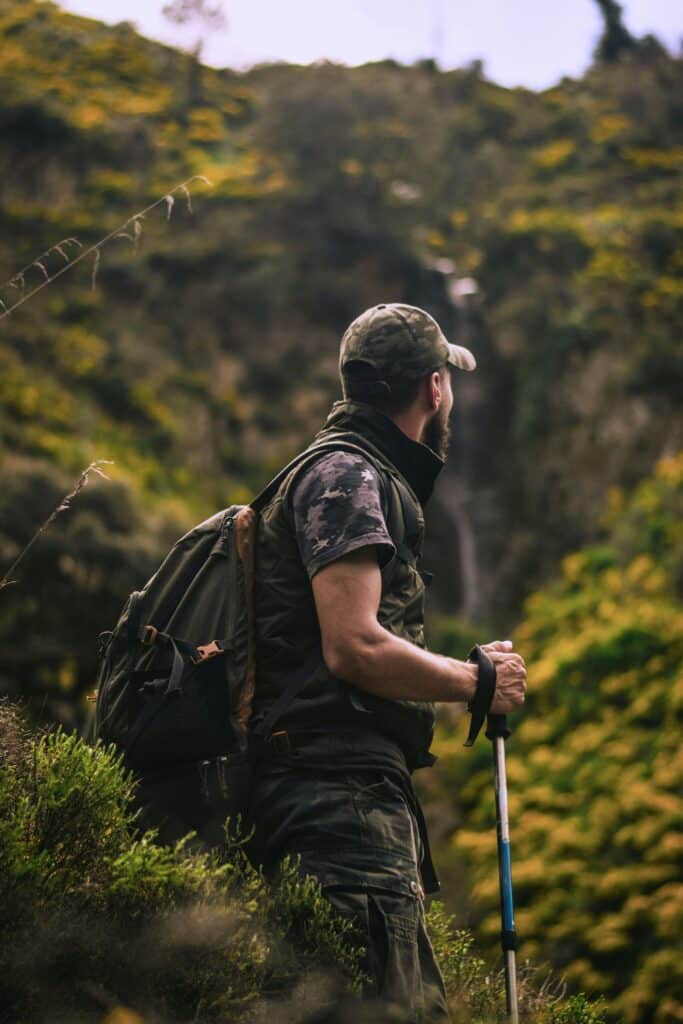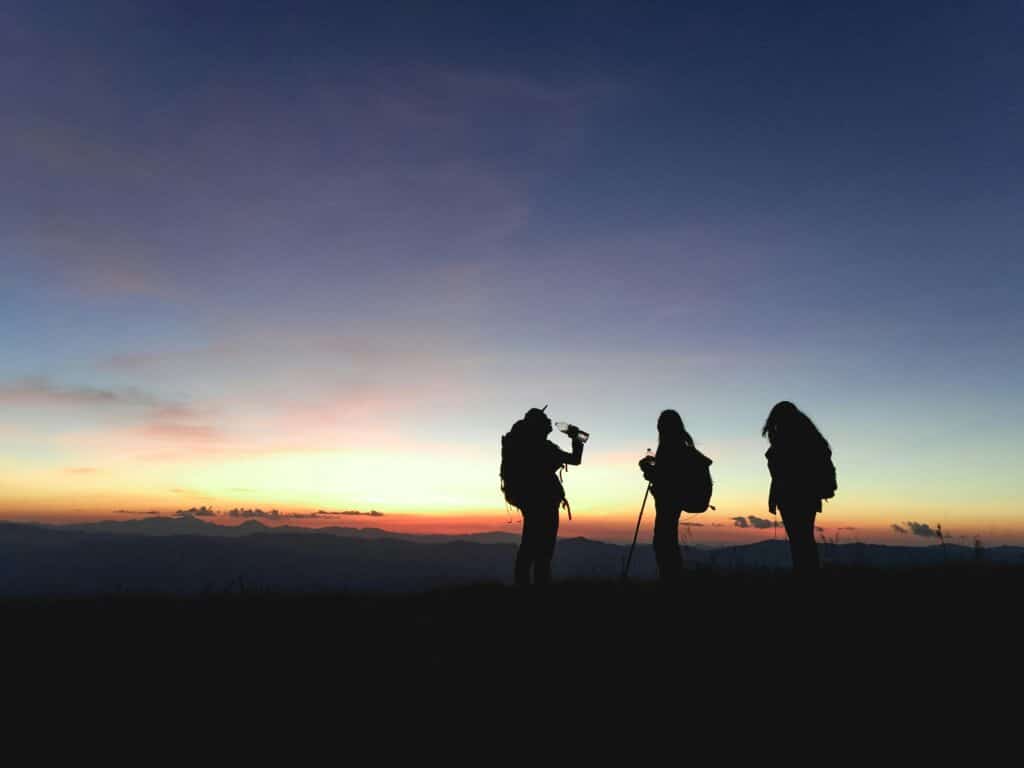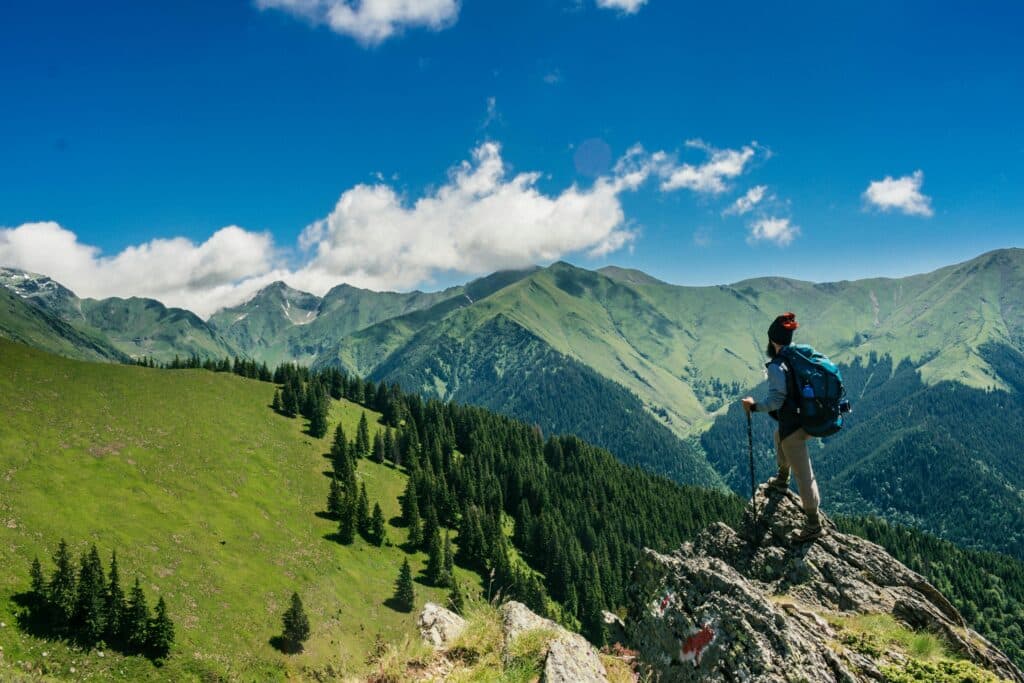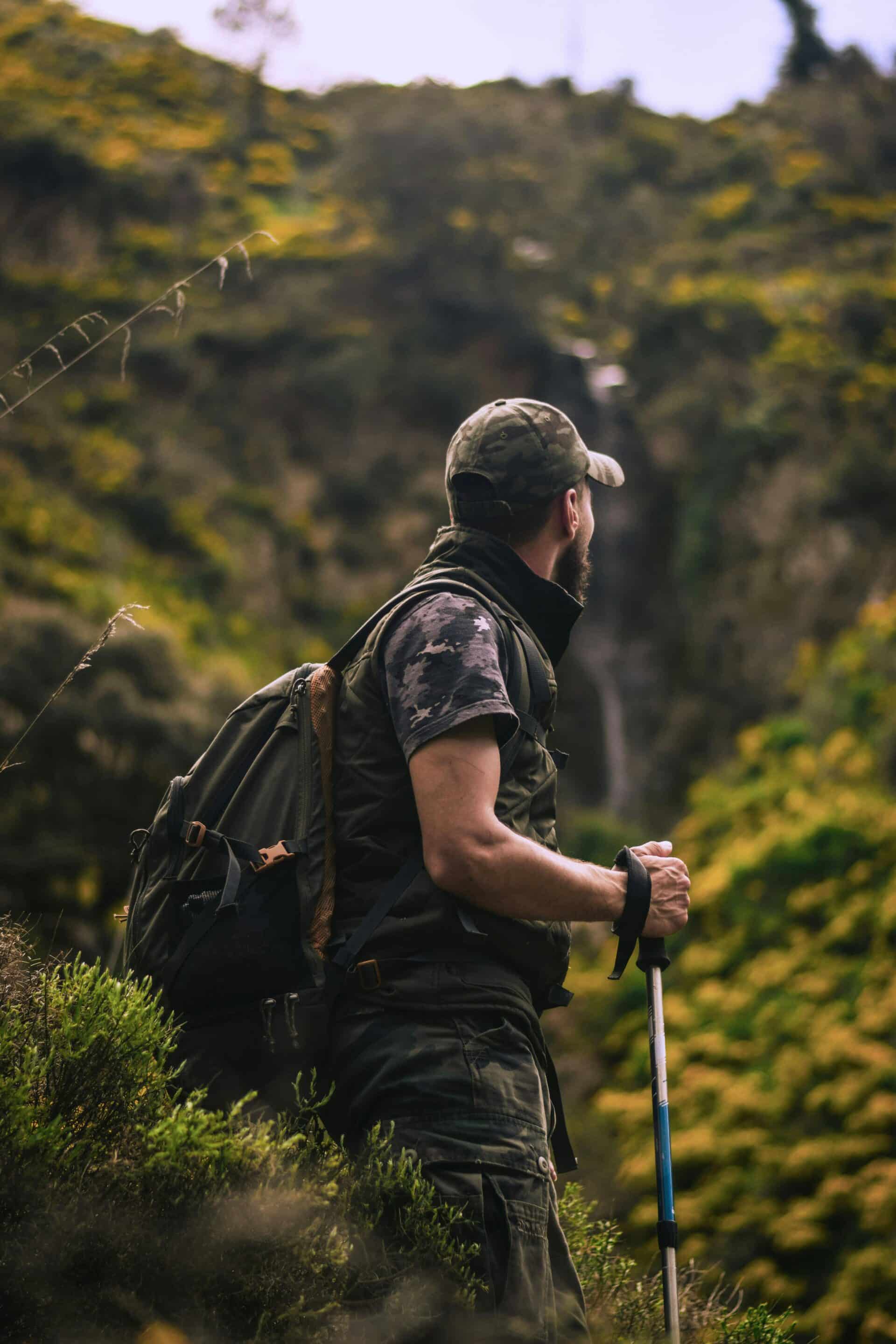Are you ready to embark on an unforgettable adventure in the breathtaking Chirripó National Park? Whether you’re a hiking novice or an experienced outdoor enthusiast looking for a new challenge, this ultimate beginner’s guide is here to help you make the most of your journey. From the awe-inspiring vistas to the diverse wildlife, we’ll provide you with essential tips, must-see attractions, and practical advice to ensure that your hiking experience in Chirripó National Park is nothing short of extraordinary. Lace up your boots, pack your backpack, and get ready to discover the wonders of this natural paradise.
Understanding Chirripó National Park
Chirripó National Park, located in Costa Rica, is a natural paradise known for its stunning landscapes, unique flora and fauna, and challenging hiking trails. This article will provide you with a comprehensive guide to understanding Chirripó National Park, including its geographical location and topography, the diverse range of flora and fauna that can be found within its boundaries, the climatic conditions you can expect when visiting, and the best times to plan your hiking adventure.
Geographical location and topography
Chirripó National Park is situated in the Talamanca Mountain Range, in the southern region of Costa Rica. It covers an area of approximately 50,150 hectares, making it the largest national park in the country. The park is named after its highest peak, Cerro Chirripó, which stands at an impressive 3,820 meters (12,533 feet) above sea level and offers breathtaking panoramic views.
The park’s topography is defined by rugged mountains, deep valleys, and pristine rivers and streams. The diverse landscapes range from subalpine grasslands to dense cloud forests, providing a habitat for an abundance of plant and animal species.
Unique flora and fauna
Chirripó National Park is home to a vast array of plant and animal life, making it a biodiversity hotspot. The park boasts over 250 species of trees, including ancient oaks, cypress, and bromeliads. The cloud forests are adorned with colorful orchids, ferns, and mosses, creating a magical and ethereal atmosphere.
When it comes to fauna, Chirripó National Park does not disappoint. Birdwatchers will delight in the sight of resplendent quetzals, toucans, and hummingbirds among many other avian species. Mammals such as tapirs, jaguars, and various species of monkeys can also be spotted in the park’s dense forests.
Climatic conditions and best times to visit
Chirripó National Park experiences a variety of climatic conditions due to its varying altitudes. At higher elevations, temperatures can drop below freezing, especially during the dry season from December to April. The park also receives abundant rainfall, especially during the wet season from May to November.
The best times to visit Chirripó National Park for hiking are during the dry season, when trails are less slippery and the risk of heavy rainfall is reduced. The months of February to April offer favorable weather conditions for experiencing the park’s extraordinary beauty and embarking on challenging hikes.
Starting Off: Hiking Gear and Essentials
Before setting off on your hiking adventure in Chirripó National Park, it’s essential to have the right gear and essentials in order to ensure a safe and enjoyable experience. From choosing the appropriate hiking boots and a supportive backpack to selecting the right clothing materials and bringing along essential gear, here’s everything you need to know.
Choosing the right hiking boots
Investing in a good pair of hiking boots is crucial for a comfortable and injury-free trek in Chirripó National Park. Look for boots that offer ankle support, waterproofing, and a sturdy sole with good traction. Take the time to try on different pairs and choose ones that fit well and provide ample room for your toes.
Importance of a supportive backpack
A supportive backpack is another essential item for your hiking adventure. Look for a backpack that has adjustable straps and a padded hip belt to help distribute the weight evenly and reduce strain on your back. Make sure the pack has enough capacity to carry all your gear and essentials without being too heavy.
Clothing material and layering
When it comes to clothing for hiking in Chirripó National Park, it’s important to choose materials that are moisture-wicking and quick-drying. Avoid cotton, as it tends to retain moisture and can leave you feeling cold and uncomfortable. Instead, opt for synthetic or merino wool materials that offer breathability and insulation.
Layering is key in Chirripó National Park, as the weather can change quickly. Start with a moisture-wicking base layer, add a lightweight insulation layer, and top it off with a waterproof and windproof outer layer. Don’t forget to bring a hat, gloves, and extra socks to protect yourself from the cold and wet conditions.
Food and water supplies
Proper nutrition and hydration are essential for a successful hike in Chirripó National Park. Pack lightweight and nutrient-dense foods such as energy bars, dried fruits, nuts, and sandwiches. Make sure to bring enough water or a water purification system to stay hydrated throughout your journey.
Assorted necessary gear (map, compass, first-aid, etc.)
In addition to the basics, there are a few essential items you should always have in your hiking gear. Carry a detailed map and compass to navigate the trails, as well as a flashlight or headlamp for emergencies. A basic first-aid kit with bandages, antiseptic wipes, and pain relievers is essential for minor injuries. Don’t forget to bring a multi-tool, a whistle, and a fully charged cell phone for extra safety measures.

Hiking Fitness and Preparations
Hiking in Chirripó National Park requires a certain level of physical fitness and stamina. To ensure that you are adequately prepared for the challenging trails, it’s important to focus on building your hiking fitness, maintaining proper hydration and nutrition, and acclimating to the high altitude.
Building physical fitness for hiking
Hiking in Chirripó National Park can be physically demanding, especially if you’re planning to tackle the more challenging trails. To build your hiking fitness, incorporate cardiovascular exercises such as walking, jogging, or cycling into your routine. Additionally, include strength training exercises that target your legs, core, and upper body to improve overall stamina and endurance.
Adequate hydration and nutrition
Proper hydration and nutrition are crucial for a successful hike in Chirripó National Park. Start hydrating well in advance of your trip and continue to drink plenty of water throughout the hike. Pack lightweight, high-energy snacks that will fuel your body during the trek. Avoid excessive consumption of caffeine and alcohol, as they can dehydrate you and affect your performance.
Acclimating to high altitude
Chirripó National Park’s highest peak, Cerro Chirripó, reaches an elevation of 3,820 meters (12,533 feet) above sea level. The high altitude can pose certain challenges, such as decreased oxygen levels and symptoms of altitude sickness. To acclimate to the high altitude, plan for a gradual ascent and spend a night at the base camp before reaching the summit. Listen to your body and be aware of any signs of altitude sickness, such as headaches, dizziness, or nausea.
Understanding Hiking Difficulty Levels
When planning a hike in Chirripó National Park, it’s important to understand the different difficulty levels of the trails. This will help you choose a hike that matches your abilities and ensures a safe and enjoyable experience. Let’s take a closer look at what each difficulty level entails and how to assess your own hiking abilities.
Easy, Medium, Hard: What does it mean?
Hiking trails in Chirripó National Park are typically classified into three difficulty levels: easy, medium, and hard.
Easy trails are suitable for beginners and those with limited hiking experience. They are well-marked, relatively flat, and do not involve any significant elevation gain or challenging terrain. These trails are perfect for those looking for a leisurely stroll through the park’s natural beauty.
Medium trails are suitable for hikers with some previous experience and a moderate level of fitness. They may involve moderate elevation gain, uneven terrain, and occasional steep sections. These trails offer a more challenging but rewarding hiking experience.
Hard trails are reserved for experienced hikers in excellent physical condition. They involve significant elevation gain, steep and rugged terrain, and may require the use of hands for scrambling. These trails offer a true adventure and require proper preparation and equipment.
Assessing your own hiking abilities
Assessing your own hiking abilities is crucial for choosing an appropriate trail in Chirripó National Park. Be honest with yourself about your fitness level, experience, and comfort with heights and challenging terrain. Start with easier trails if you’re a beginner and gradually work your way up to more challenging hikes as you gain experience and confidence. It’s always better to underestimate your abilities and have an enjoyable hike than to overestimate and put yourself at risk.

Learning About Chirripó’s Hiking Trails
Chirripó National Park offers a wide range of hiking trails that cater to different skill levels and interests. Each trail presents unique opportunities to immerse yourself in the park’s natural beauty and discover breathtaking sights along the way. Here’s an introduction to some of the major hiking trails in Chirripó National Park, along with information on their difficulty levels and terrain.
Introduction to major hiking trails
-
The Crestones Base Trail: This trail is one of the most popular in Chirripó National Park, leading hikers to the base of the iconic Crestones rock formations. It offers a moderate level of difficulty with a well-marked path and stunning views throughout the journey.
-
The Chirripó Summit Trail: This trail is the ultimate challenge for experienced hikers, leading to the summit of Cerro Chirripó. It involves significant elevation gain, rugged terrain, and extreme weather conditions. Only hikers with proper preparation and a permit are allowed to attempt this trail.
-
The Los Crestones Trail: This trail takes hikers through dense cloud forests, offering an immersive experience in Chirripó National Park’s diverse flora and fauna. It is a moderate to difficult trail, with some steep sections and uneven terrain.
Understanding trail difficulty and terrain
Trail difficulty in Chirripó National Park is determined by factors such as elevation gain, overall distance, steepness, and the condition of the trail. Trails with more significant elevation gain and challenging terrain are classified as difficult, while trails with flatter sections and well-maintained paths are considered easier.
The terrain in Chirripó National Park can vary from rocky and uneven to muddy and slippery, especially during the rainy season. It’s important to be prepared for different types of terrain and wear appropriate footwear that provides good traction.
Must-visit sights and views on each trail
Chirripó National Park is known for its stunning vistas and must-visit sights along its hiking trails. The Crestones Base Trail offers breathtaking views of the iconic rock formations, while the Chirripó Summit Trail rewards hikers with panoramic views from the highest peak in Costa Rica. The Los Crestones Trail treats hikers to encounters with unique flora and fauna, as well as serene forest landscapes.
Make sure to take the time to appreciate these natural wonders and capture unforgettable memories of your hiking adventure in Chirripó National Park.
Safety Measures While Hiking
Hiking in Chirripó National Park can be an exhilarating and rewarding experience, but it’s essential to prioritize safety at all times. Being prepared with basic first aid knowledge, understanding how to react to encounters with local wildlife, keeping track of your location, and deciding whether to hike solo or with a group are crucial safety measures to consider.
Basic First Aid knowledge
Having basic first aid knowledge can make a significant difference in an emergency situation. Take the time to familiarize yourself with techniques such as CPR, treating minor wounds, and recognizing symptoms of altitude sickness. Carry a basic first aid kit and know how to use its contents.
Local wildlife and how to react
Chirripó National Park is home to diverse wildlife, including potentially dangerous species such as jaguars and snakes. It’s important to educate yourself about the local wildlife and understand how to react if you encounter them. Respect their natural habitat, keep a safe distance, and avoid any actions that may provoke them. If you’re unsure, consult with park rangers or local guides for guidance.
Keeping track of your location
Navigating the trails in Chirripó National Park can be challenging, especially in areas with limited cell phone reception. It’s important to have a map, compass, or GPS device with you and know how to use them properly. Familiarize yourself with trail markers and be mindful of any changes in the landscape that could alter your route.
Hiking solo vs with a group
Deciding whether to hike solo or with a group is a personal choice that should take into account your level of experience, comfort, and the difficulty level of the trail. Hiking with a group can provide safety and support in case of emergencies, but solo hiking allows for a more personal and introspective experience. If you choose to hike solo, make sure to inform someone about your itinerary and when you expect to return.

Respecting the Environment
Respecting the environment is of utmost importance when hiking in Chirripó National Park. By following ‘leave no trace’ principles, respecting local wildlife, and practicing campfire safety, you can help preserve the park’s natural beauty for future generations to enjoy.
‘Leave no trace’ principles
The ‘leave no trace’ principles aim to minimize human impact on natural spaces. When hiking in Chirripó National Park, make sure to pack out all your trash, including food waste. Stick to designated trails to avoid damaging fragile ecosystems, and refrain from removing plants, rocks, or other natural objects. Respect any signs or regulations put in place by park authorities to protect the environment.
Respecting local wildlife
When encountering wildlife in Chirripó National Park, it is essential to maintain a respectful and safe distance. Do not approach or feed animals, as this can disrupt their natural behavior and cause harm to both them and you. Observe quietly from a distance and enjoy the privilege of witnessing these incredible creatures in their habitat.
Campfire safety
If camping is part of your hiking adventure in Chirripó National Park, it’s important to practice campfire safety. Follow park regulations regarding where and when campfires are permitted. Use established fire pits or stoves and make sure to fully extinguish the fire before leaving the campsite. Never leave a fire unattended and be mindful of the potential risks associated with open flames in a natural environment.
What To Do in Emergencies
While hiking in Chirripó National Park, it’s crucial to be prepared for emergencies and know what steps to take. Familiarize yourself with common hiking injuries and their treatment, know when to call for help, and learn emergency signal techniques.
Common hiking injuries and their treatment
Hiking injuries can range from minor cuts and scrapes to more serious sprains, fractures, or heat exhaustion. It’s important to carry a first aid kit and be familiar with basic injury treatment. Clean and dress wounds, immobilize fractures, and provide pain relief if necessary. If an injury is severe or you’re unsure how to treat it, seek medical assistance as soon as possible.
When to call for help
Knowing when to call for help is crucial in emergency situations. If you or someone in your group is experiencing symptoms of dehydration, altitude sickness, or a severe injury, it’s important to seek professional medical assistance. If you have cell phone reception, call emergency services or contact park rangers. If you’re unable to make a call, use any available emergency signal techniques such as blowing a whistle or using reflective gear to attract attention.
Emergency signal techniques
In case of an emergency in Chirripó National Park, it’s important to be able to signal for help effectively. Carry a whistle or other noise-making device that can be used to attract attention. Reflective gear, such as a mirror or reflective clothing, can also be useful for signaling rescuers from a distance. Learn and practice these techniques before your hike, so you’re prepared if an emergency situation arises.

Optimising Your Hiking Experience
To optimize your hiking experience in Chirripó National Park, there are a few strategies and techniques that can help you maintain a comfortable pace, enhance stability and balance, and take effective breaks when needed.
Maintaining a comfortable pace
Hiking in Chirripó National Park is not a race. It’s important to maintain a comfortable pace that allows you to enjoy the surroundings and conserve energy for the duration of your hike. Listen to your body and adjust your speed accordingly. Take breaks when needed to rest, hydrate, and refuel.
Using hiking poles
Hiking poles are a valuable tool that can enhance stability and balance, especially on challenging terrain. They can help reduce strain on your knees and provide additional support when navigating uneven surfaces. Practice using hiking poles before your hike and adjust them to the appropriate height for your comfort.
Taking effective breaks
Taking effective breaks during your hike is crucial for rest and recovery. Use your breaks to hydrate, eat a small snack, and stretch your muscles. Take the time to enjoy the breathtaking views and connect with nature. Remember to pack out any trash and leave the area as pristine as you found it.
Post-Hike: Recovery and Reflection
After completing your hiking adventure in Chirripó National Park, it’s important to prioritize post-hike recovery, reflect on your experience, and start planning your next adventure.
Importance of post-hike recovery
Post-hike recovery is essential for allowing your body to rest and heal after exertion. Take the time to stretch, hydrate, and nourish your body with nutritious food. Consider taking a warm bath or using a foam roller to relieve muscle soreness. Adequate rest and recovery will ensure that you’re ready for your next hiking adventure.
Recording and sharing your experience
Reflecting on your hiking experience in Chirripó National Park is a meaningful way to preserve memories and share your adventure with others. Write in a journal, create a photo album, or share your stories and photos on social media. By documenting and sharing your experience, you can inspire others to explore and appreciate the beauty of this remarkable national park.
Planning your next hike in Chirripó National Park
Chirripó National Park offers a multitude of hiking trails waiting to be explored. After completing your first hike, start planning your next adventure in this captivating natural paradise. Research different trails, consult with park authorities or local guides, and make sure to choose a hike that challenges and excites you. With each hike, you’ll continue to discover new wonders and deepen your connection with Chirripó National Park.
In conclusion, understanding Chirripó National Park is the first step towards embarking on a safe and enjoyable hiking adventure. From its unique geographical location and topography to its diverse flora and fauna, Chirripó National Park offers a mesmerizing experience for outdoor enthusiasts. By being prepared with the right gear, focusing on physical fitness and hydration, and respecting the environment and safety measures, you can optimize your hiking experience and create unforgettable memories in this natural wonderland. So pack your bags, lace up your hiking boots, and get ready to explore the breathtaking beauty of Chirripó National Park.








0 Comments